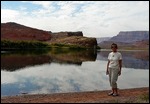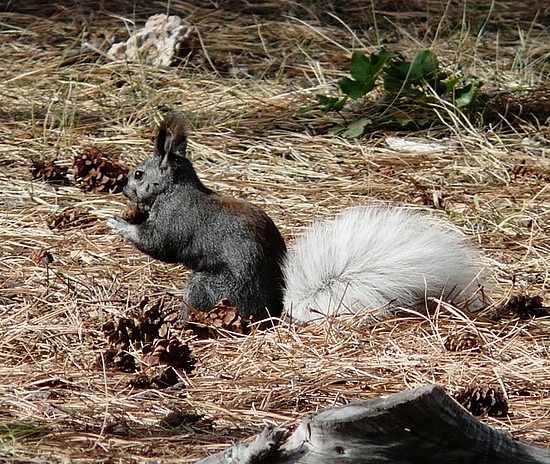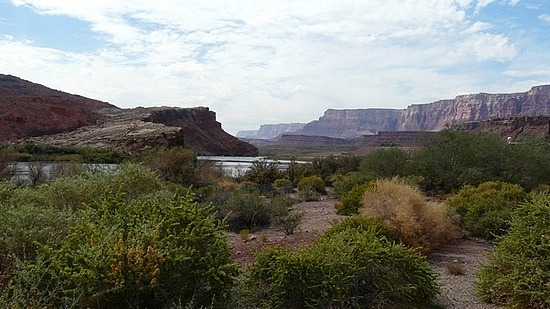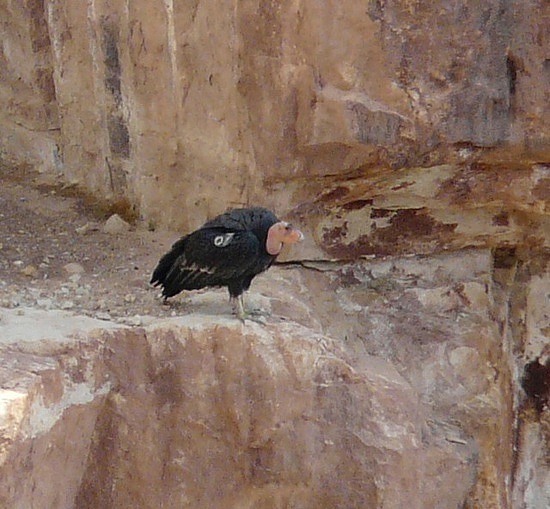The Kaibab squirrel is seen only in the area of the North Rim of the Grand Canyon and the Kaibab National Forest. We were lucky to see one near our cabin this morning. They have fringy pointed ears, bushy white tails, and a dark body.
We drove along the Vermilion Cliffs and then down a dirt road to a place where you can see California condors. They are part of a program to reintroduce them to Arizona and increase their numbers. There were two volunteers with binoculars and tracking systems. They said that right now there are between 15 and 55 of them in the area. They may fly 100 miles daily looking for food. We could see the area where they are first released and we could see several of them flying over the red cliffs. They like to make their homes in the ledges and crevices of the cliffs.
We continued on Arizona 89A to Lees Ferry, which was the first ferry crossing of the Colorado River. The ferry started in 1872 and continued until the Navajo Bridge was built across the river in 1928. Lees Ferry is still the area where all Colorado River boats are launched. Trips may last 3-18 days and people go by kayak, small motorized boats, and inflatable rafts. We watched some people getting ready to head down the river in rafts.
The area around Lees Ferry has interesting rock formations and boulder fields. We drove from there to the Navajo Bridge. The old bridge remains but is no longer in use except for pedestrian touring. The new bridge was built nearby to accommodate the heavier vehicles, especially trucks, of today. Mark, brave as usual, walked to the middle of the old bridge and watched the rafters coming down the river from Lees Ferry. We also saw a condor who was hanging out under the new bridge and on the cliffs.
Soon after crossing the Colorado River on the new Navajo Bridge, we entered the Navajo Nation. You can drive for miles through these wide open spaces and see no communities or even homes. Many Navajos have their main homes in more remote areas where they have sheep farms. They have second homes that are more convenient to the schools, so that their children can be more easily educated. Each home we saw also had a hogan, the traditional Navajo home. These are used for ceremonial purposes and often the grandmother likes to live in one. The doors of hogans face the east to greet the rising sun and the hogans are usually six or eight sided, looking like small round houses from a distance.
Our stop for the night was Tuba City, which is the western tribal center for the Navajo Nation. It's a bustling small town. I tried a Navajo Taco for dinner. The fairly typical taco filling is served open faced on Navajo fry bread, a big puffy round thing. It was quite good.













